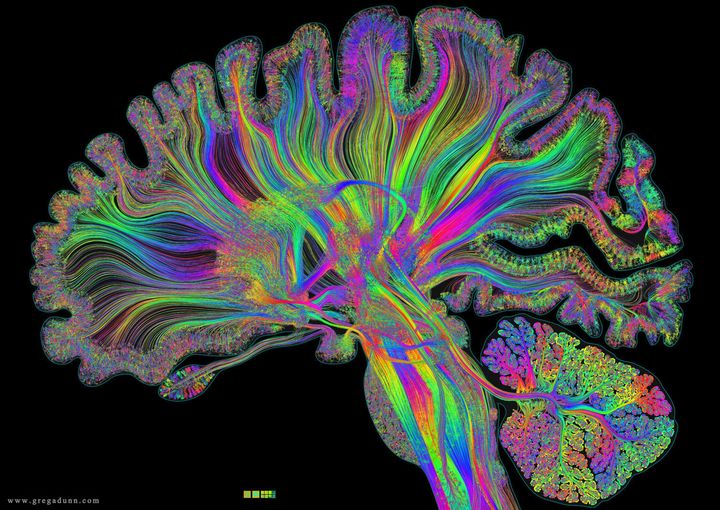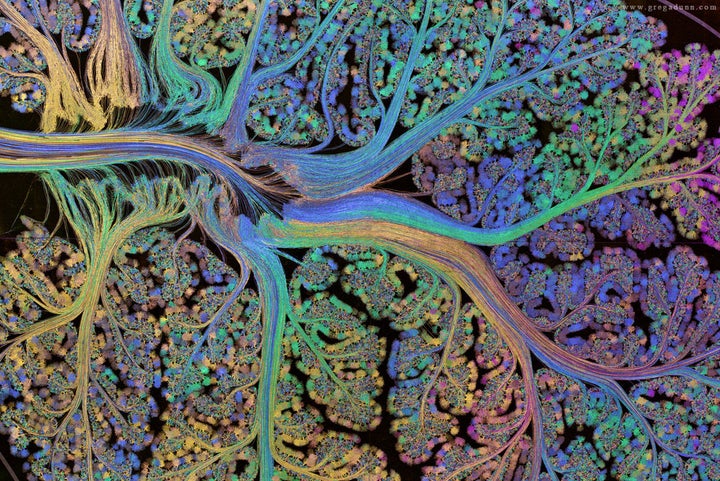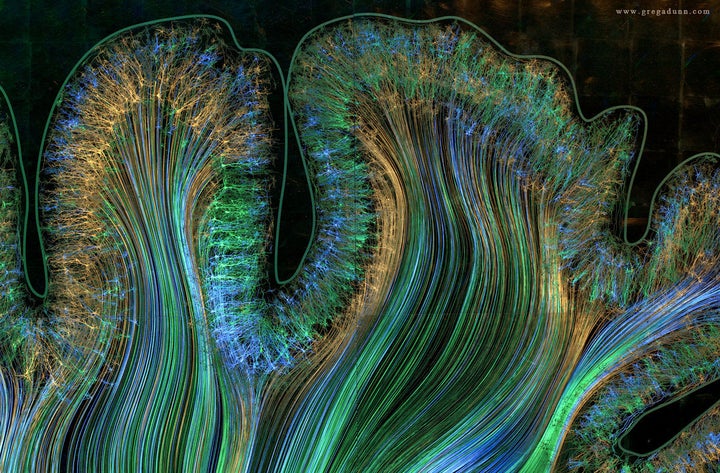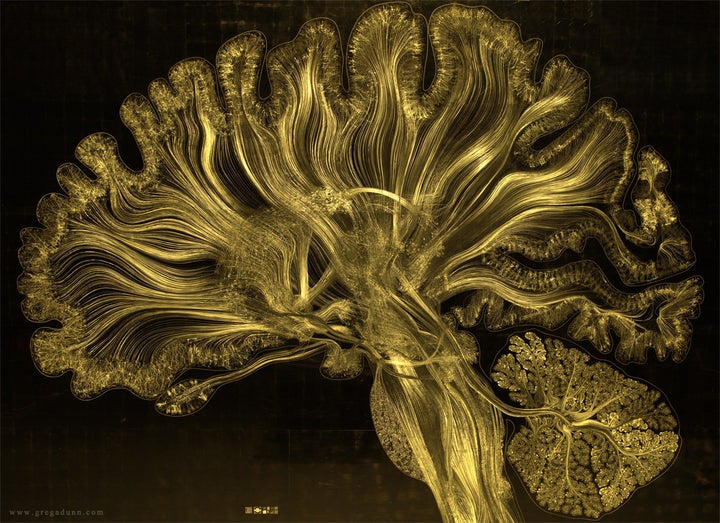
Your brain has approximately 86 billion neurons joined together through some 100 trillion connections, giving rise to a complex biological machine capable of pulling off amazing feats. Yet it's difficult to truly grasp the sophistication of this interconnected web of cells.
Now, a new work of art based on actual scientific data provides a glimpse into this complexity.
The 8-by-12-foot gold panel, depicting a sagittal slice of the human brain, blends hand drawing and multiple human brain datasets from several universities. The work was created by Greg Dunn, a neuroscientist-turned-artist, and Brian Edwards, a physicist at the University of Pennsylvania, and goes on display Saturday at The Franklin Institute in Philadelphia. There will be a public unveiling and a lecture by the artists at 3 p.m.
"The human brain is insanely complicated," Dunn said. "Rather than being told that your brain has 80 billion neurons, you can see with your own eyes what the activity of 500,000 of them looks like, and that has a much greater capacity to make an emotional impact than does a factoid in a book someplace."

To reflect the neural activity within the brain, Dunn and Edwards have developed a technique called micro-etching: They paint the neurons by making microscopic ridges on a reflective sheet in such a way that they catch and reflect light from certain angles. When the light source moves in relation to the gold panel, the image appears to be animated, as if waves of activity are sweeping through it.
First, the visual cortex at the back of the brain lights up, then light propagates to the rest of the brain, gleaming and dimming in various regions -- just as neurons would signal inside a real brain when you look at a piece of art.
That's the idea behind the name of Dunn and Edwards' piece: "Self Reflected." It's basically an animated painting of your brain perceiving itself in an animated painting.
Here's a video (made by Will Drinker) to give you an idea of how the etched neurons light up as the light source moves:
To make the artwork resemble a real brain as closely as possible, the artists used actual MRI scans and human brain maps, but the datasets were not detailed enough. "There were a lot of holes to fill in," Dunn said. Several students working with the duo explored scientific literature to figure out what types of neurons are in a given brain region, what they look like and what they are connected to. Then the artists drew each neuron.


Dunn and Edwards then used data from DTI scans -- a special type of imaging that maps bundles of white matter connecting different regions of the brain. This completed the picture, and the results were scanned into a computer.
Using photolithography, the artists etched the image onto a panel covered with gold leaf. Then, they switched on the lights:

"A lot of times in science and engineering, we take a complex object and distill it down to its bare essential components, and study that component really well" Edwards said. But when it comes to the brain, understanding one neuron is very different from understanding how billions of neurons work together and give rise to consciousness.
"Of course, we can't explain consciousness through an art piece, but we can give a sense of the fact that it is more complicated than just a few neurons," he added.
The artists hope their work will inspire people, even professional neuroscientists, "to take a moment and remember that our brains are absolutely insanely beautiful and they are buzzing with activity every instant of our lives," Dunn said. "Everybody takes it for granted, but we have, at the very core of our being, the most complex machine in the entire universe."

